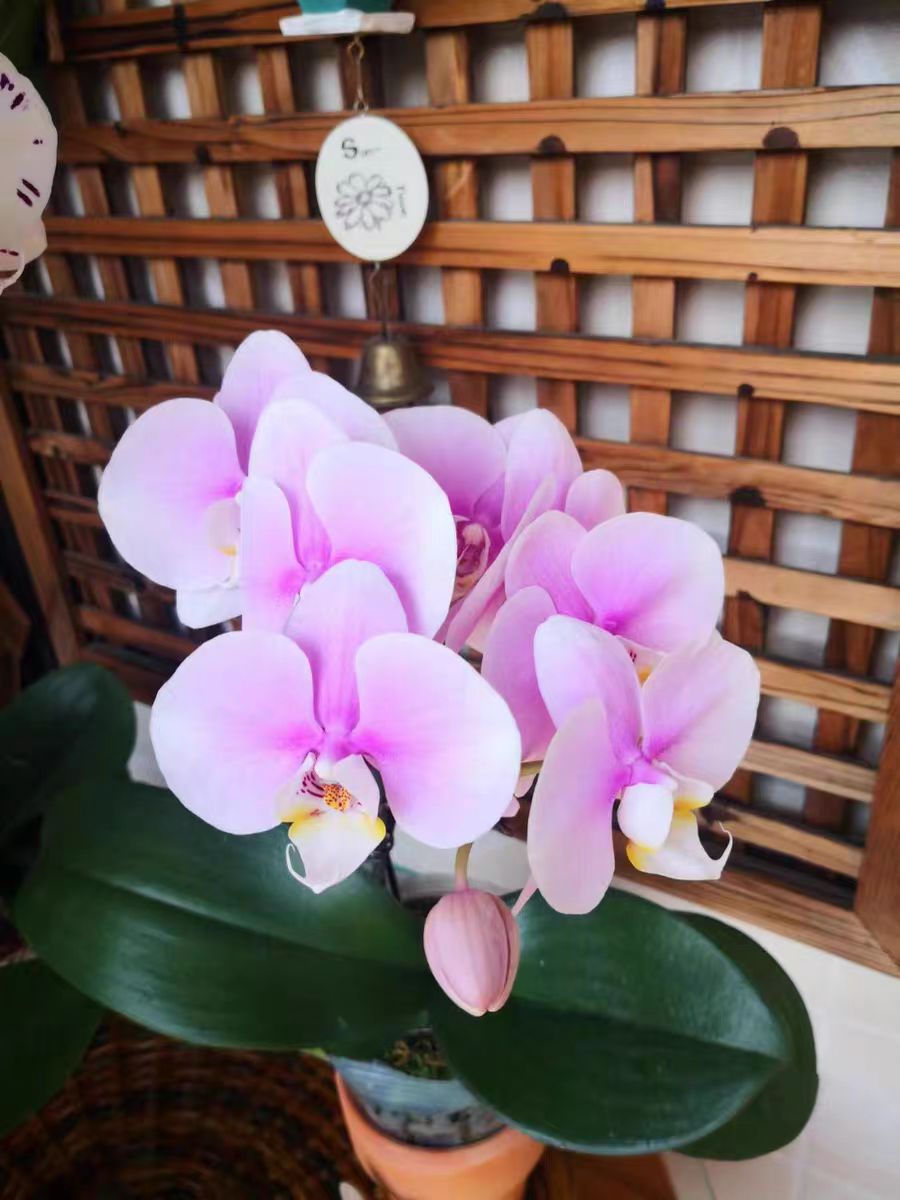When growing phalaenopsis (butterfly orchids), do you always focus on the flowers? In fact, healthy leaves can double the plant's overall beauty! Shiny, lush green leaves are incredibly soothing to the eye.
Basic Care Tips
1. Light Management: Crucial for Leaf Health
Phalaenopsis dislike direct sunlight—excessive exposure causes yellowing and spotting. Place them in a bright, indirect light spot, such as behind a sheer curtain by the window or half a meter away from the window.
3–4 hours of daily light allows leaves to photosynthesize and produce chlorophyll, maintaining their green hue. Prolonged low light makes leaves thin, soft, and pale.
2. Watering: A Skill to Master
Both roots and leaves store water, so avoid frequent watering. Overwatering causes root rot, yellowing, and leaf decay.
Check moisture by inserting your finger into the sphagnum moss or medium—water when the bottom two knuckles feel dry. For sphagnum moss, lift the pot: a 明显 lighter weight signals it's time to water.
Water slowly along the pot edge, never letting water pool in the leaf axils (center), as this causes rot and black spots.
3. Fertilizing for Shiny Leaves
During the growing season (spring and autumn), feed with orchid-specific nutrient solution 1–2 times monthly. Dilute as directed and apply to roots or spray on leaves.
Key principle: "Light fertilization, frequent application." For yellowing or slow-growing leaves, supplement with nitrogen (e.g., 0.1% urea solution as a foliar spray).
Stop fertilizing in winter when growth slows to prevent root burn.
4. Leaf Cleaning: An Often Overlooked Step
Dust on leaves hinders respiration and photosynthesis. Wipe leaves gently with a damp soft cloth every few days.
For wilted leaves, mix water with beer (10:1 dilution) and wipe—this adds shine and provides nutrients absorbed by the leaves.
5. Environmental Considerations
Ideal temperature: 15–30°C. Extreme cold or heat affects leaf condition.
In dry northern winter homes, place a water tray near the pot or use a humidifier to maintain 60%–80% humidity.
In humid southern rainy seasons, ventilate frequently to prevent mold and leaf diseases.
6. Pest and Disease Control
Pests like spider mites and scale insects suck leaf sap, causing yellowing and defoliation. For minor infestations, wipe bugs off with an alcohol-dipped cotton swab; use insecticides like Huhuashen or imidacloprid for severe cases.
For soft rot or leaf spot diseases, cut off infected leaves immediately and spray with carbendazim to prevent spread.
Follow these tips, and your phalaenopsis leaves will grow large, glossy, and vibrant—enhancing the flowers' beauty even more. Even after the blooming period, the lush foliage alone is a feast for the eyes!
How to Keep Phalaenopsis Leaves Beautiful?

Share with
Tagged in :




Leave a Reply